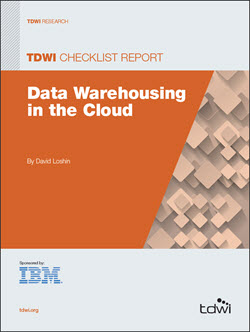
June 29, 2015
An impact of the burgeoning business interest in analytics is
increased interest among small and midsize businesses to adopt
a business intelligence (BI), reporting, and analytics strategy.
In the past, larger organizations may have been willing to invest
in hardware, software, and expertise to establish an enterprise
data warehouse environment. However, smaller businesses have
often lacked the budget, access to skilled professionals, or the
determination to design, build, and support the necessary dedicated
platforms.
Expanding the pool of organizations able to embrace a data
warehousing and BI capability depends on:
- Reducing the complexity of instantiating an analytics environment
- Lowering the cost barrier to entry
- Unshackling business users from the information technology (IT)
department by providing rapid accessibility to data using self-service
analytics tools
Fortunately, as data professionals have gained experience in
implementing common design patterns and integration models,
the data warehousing industry has matured, resulting in a general
agreement about the architecture of an end-to-end BI and analytics
framework.
Coupling this prototypical architecture with increasingly
sophisticated software tools addresses this challenge. It simplifies
launching a dedicated system for data analysis and reduces the
need for specialized skills. The convergence of the standardized
architecture for data warehousing and BI, advances in data
integration and data discovery technologies, and cost models of
utility computing via the cloud enables vendors to develop cloud-based
data warehousing systems.
This paradigm allows vendors to instantiate their tool suite as a
managed platform in a way that presents a special opportunity for
a broad community of businesses to fulfill the objectives of their
analytics strategies. Relying on a service provider to instantiate
the platform simplifies the business’s progression toward the
advantages of analytics. Using a cloud-based data warehouse
eliminates the need for capital hardware investments and IT support
staff to configure and manage the platform. This frees the data
scientists, analysts, and architects to focus on the analytical models
that will improve business performance.
Our objective in this Checklist Report is to share best practices that
will position the reader to take advantage of a cloud-based data
warehousing solution.